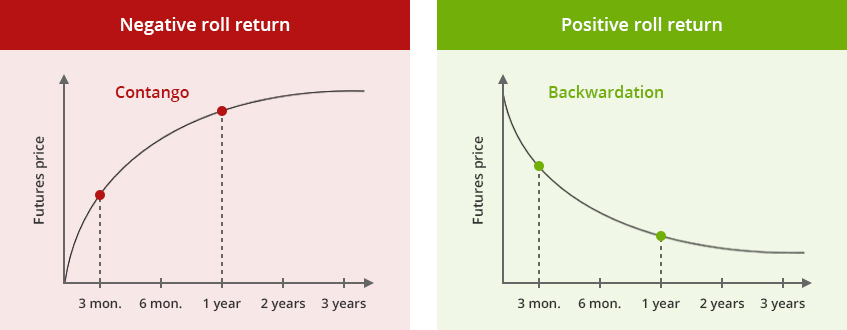
- Level: For advanced
- Reading duration: 5 minutes
What to expect in this article
- Agriculture - example commodities include wheat and coffee.
- Energy - think oil and gas.
- Precious metals - gold and platinum are your poster boys.
- Industrial metals - zinc and copper, for instance.
- Livestock - hello lean hogs and cows.
How commodity ETFs work
The unexpected thing about commodity ETFs is that they don’t track the current price of commodities, instead, they respond to the futures price. This is not as daft as it sounds. The current price for a commodity is known as the spot price. When you hear about the price of oil shooting up in the news, the reporter will normally be talking about the spot price. This is the price you'd pay right now to take delivery of a barrel of oil immediately. Or it might be a ton of sugar or a wagonload of cows. But we don’t want a wagonload of cows on our hands or a shipment of oil. Unlike withholding millions in equity securities, our ETF provider would be forced to charge us horrendous storage costs to stash away all those cows until we needed them. So commodity ETFs deal with that problem by trading in commodities futures and tracking the future’s price instead. Futures are financial contracts that, for example, commit you to take delivery of 10,000 lean hogs in three months at a set price. This contract provides exposure to the commodity without fretting about the noise, smell and ablutions of 10,000 lean hogs. As the delivery day approaches, our ETF provider deftly sells the contract to someone who actually wants the beasts. Scale that process up across the world’s major commodities, and you have a working knowledge of how a commodity ETF operates. It’s a continual process of buying long-dated futures contracts with comfortably far-off due dates while selling short-dated ones to ensure you need never worry about where you're going to park all those hogs. Through this mechanism, a commodity ETF provides practical exposure to indexes that track commodity futures.Roll returns matter
The outcome of all that futures trading is that commodity ETFs aren’t designed to track spot prices. Returns are instead a blend of spot price fluctuations, interest earned on collateral held by the fund, and the roll return. The roll return is the profit or loss the fund makes through its regular futures trading, i.e. rolling out of short-term contracts and replacing them with long-term ones. The ETF makes a positive roll return when it can buy long-dated futures in a commodity for less than it sells its expiring short-dated contracts. This is a market condition known as backwardation. But the ETF earns a negative roll yield when it must buy long-term futures at a higher price than the short-term ones. This is called contango.Positive roll return vs. negative roll return

Source: justETF Research
Think of backwardation as a tailwind that boosts your ETF and contango as a headwind that makes the going harder. These forces can cause the performance of a commodity ETF to differ markedly from spot price trends and are a good reason to choose a broad-basket commodity ETF over a single commodity ETC.
Individual commodity markets are highly volatile and will often switch between periods of backwardation and contango.
But as ever, you can protect yourself from long periods of underperformance in any one commodity by spreading your bets across a broad range. You may even pick up a rebalancing bonus, as commodities tend to have low correlations with one another.
















